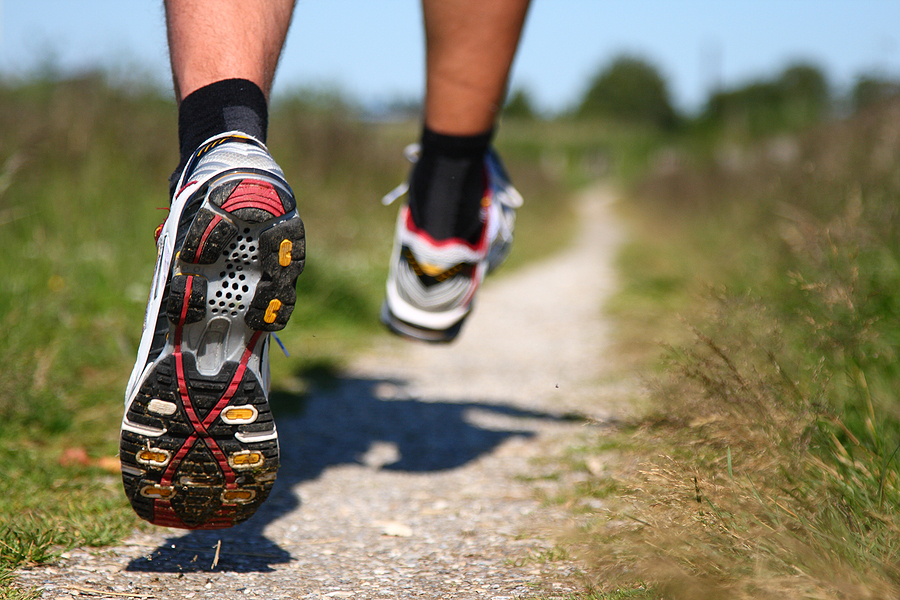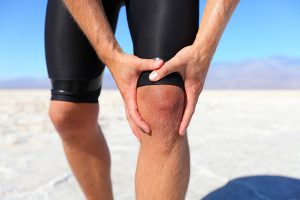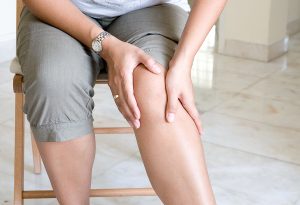Back in 2009, the American Podiatric Medical Association found that 64% of Americans wear shoes that cause foot pain. Of those people, 12% wear painful footwear every day. That’s never a good idea. Ill-fitting and unsupportive shoes caused foot problems in 78% of Americans. Heel pain and blisters are common problems, but much more is at stake.
Pinched nerves are one of the bigger risks, leading to 36% of Americans finding their mobility is impacted. Worse, people experiencing foot pain rarely talk to their doctor about it or see a podiatrist. When you play sports, footwear that supports your heel and ankle and absorbs impact is critical. It’s time to learn how to choose the best shoes for preventing sports injuries with tips and tricks from our team at Premium Sports and Orthopedics.
Common Sports Injuries Tied to Improper Footwear
Six sports injuries stand out as being tied to improper sneakers or cleats. Explore which each one is and what the treatment involves.
Achilles Tendonitis
If shoes fail to support the heel properly, the Achilles tendon may become strained. As this tendon’s job is to connect the calf muscles to the heel, it gets a lot of use when walking, stretching, running, or jumping.
Self-care following the RICE (Rest, Ice, Compression, Elevation) is essential when it’s a mild strain. With a complete tear, surgery may be required. It’s also worth talking to a sports and orthopedic specialist about strengthening exercises.
Ankle Strains and Sprains
Sneakers are also important for supporting the ankle joint when jumping, running, sprinting, and sudden turns. On a wet field, cleats are important. If a shoe doesn’t hold the ankle steady or lacks the necessary grip for traction, the risk of a fall or twisted ankle injury increases. That can lead to a strained or sprained ankle. Worse, you could end up with a broken ankle.
Strains heal in a few days, but a strain or fracture could take weeks or months to heal. In that time, it becomes harder to get back into the sport as your muscles haven’t been exposed to practices and games. It’s another reason to have the right footwear for the sport you play.
Bone Spurs
A bone spur is a slow-growing section of bone that forms where bones meet together. Several things can cause bone spurs to grow, including arthritis, injuries, and improper posture. Shoes that fit correctly protect joints from excessive wear and can also help you with posture.
Bone spurs don’t always affect your movements, but they can become painful. Physical therapy and supportive footwear are the two most common treatments.
Plantar Fasciitis
When the tissue that stretches from the heel to your toes is strained or impacted by a sudden foot injury, it may become inflamed. When a shoe takes the brunt of the impact when running or jumping, it can help. The most common treatment is RICE, physical therapy, and in severe cases corticosteroid injections or surgery.
Stress Fractures
A stress fracture is a small crack that is caused by repetitive force and overuse, both issues in sports. These fractures take up to two months to heal, but they can be prevented by having shoes that cushion the feet. Shoes with good padding and sport are crucial.
Turf Toe
Turf Toe is a condition where the big toe’s joint suddenly bends too far. It’s common in football. That sudden movement injures the tendons and tissues in the joint. Because artificial turf isn’t very forgiving, the risk of sudden jarring blows to that joint is a risk. That’s why it’s important to choose a shoe that takes the brunt of the impact when running or jumping.
Tips for Choosing the Best Shoes for Athletes
How do you know which athletic shoes are best? There are several things to do to ensure you get the best shoe for the sport you play.
Get a Professional Measurement
This is where a professional shoe fitting helps a lot. Many people wear the wrong size. According to the National Institutes of Health, between 63% to 72% wear shoes that do not fit correctly. Shoes that are too wide or long will rub. Shoes that are too tight or narrow can pinch and cause conditions like hammertoe. Wearing the right size is important, but it’s hard as sizing can differ between manufacturers.
When possible, see if the manufacturer offers sizing charts using your exact measurements. Measure the length of both feet. Then measure the width at the widest part of the foot. If you need to, trace your foot on a piece of paper first to make it easy to measure. This helps with more accurate sizing.
Test Shoes Late in the Day
After a day of being on your feet, they’re going to be swollen, even if it’s only slightly, it helps get the best fit. By the end of a game or practice, your feet will have taken a lot of impact which does make them swell. You want shoes that fit perfectly when they’re at this point.
Shop at Stores That Allow You to Walk, Run, and Jump
What do you do in a typical game or practice? If you do a lot of sudden stops, spins, and jumps, put on a pair of shoes and test them using those movements. Is there a store with an outdoor track where you can test the shoes when running? Shop there.
Pick Shoes Suitable to the Sport You Play
Choose a shoe that matches the sport you play. Basketball sneakers come higher up your leg for better ankle support when jumping and twisting. They also have heavier soles and better cushioning to stand up to the harder surface of the basketball court.
Baseball sneakers often have molded or metal cleats. These cleats help dig into the ground for traction when sprinting from base to base or running to catch a ball. By comparison, there are tennis shoes that are designed to support the ankle during constant lateral movements.
See What Type of Arch You Have
What type of arch do you have? The best way to determine this is by dipping your foot in water and stepping on a piece of construction paper. How much of the middle portion of your foot can you see? If you can see most of your arch, you have flat feet. If you can’t see much of an arch, you have a high arch. Anything in between those two is a normal arch.
If you have a normal arch, you don’t need to worry as much about the type of footwear you choose. However, a flat food needs more support to avoid overpronation, which is where your foot rolls inward when you move. You need a shoe designed with motion control to keep the foot cushioned and stable.
People with a high arch need footwear that cushions each step. Look for shoes that absorb impact and have footbeds with insoles that are designed to support a higher arch. You also want a shoe that has a roomier toe box to avoid cramped toes.
Know When It’s Time to Replace Them
A good rule of thumb is to replace athletic shoes every 300 to 500 miles, but it depends on the sport. High-intensity sports like basketball and football can lead to shoes wearing out after just a month of games.
Look at the bottom of the shoe, is there wear? Do you see noticeable creases or uneven wear on the sole? Do your feet hurt when they never used to? Cracks, holes, and rips all indicate it’s time to replace them.
Make your shoes last longer by rotating them every game or two. Have multiple pairs available. When one isn’t being used, it can dry out.
If you do experience pain during practice or a game, don’t ignore it. Premium Sports & Orthopedics is here to address the pain, assist you as you heal, and work with you to prevent future injuries. Many of our treatment options are non-invasive, so it doesn’t have to keep you out of the game for months. If you can avoid surgery, it’s always the better option. Our doctors can help you make that decision by covering your options.







